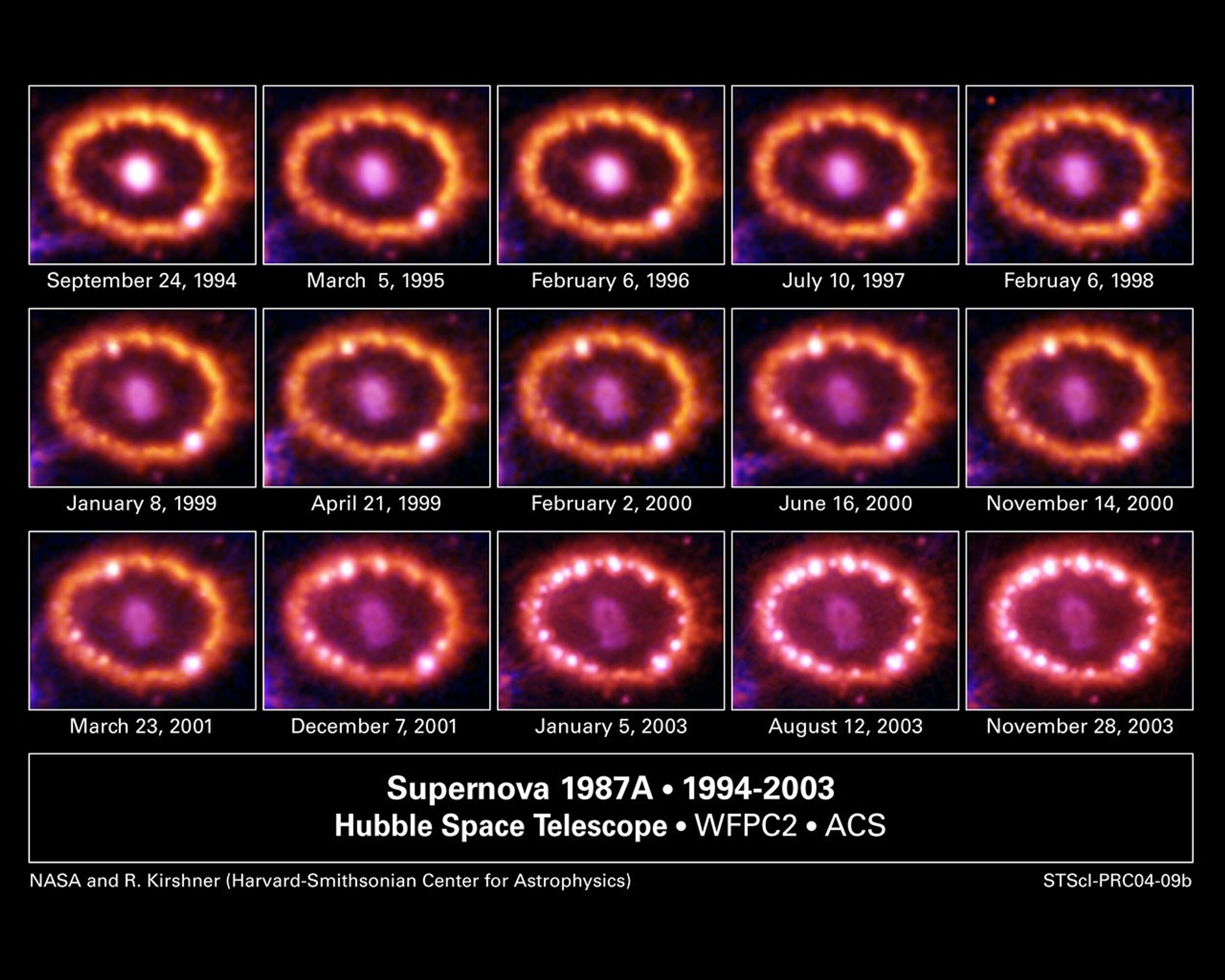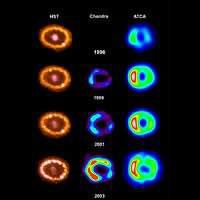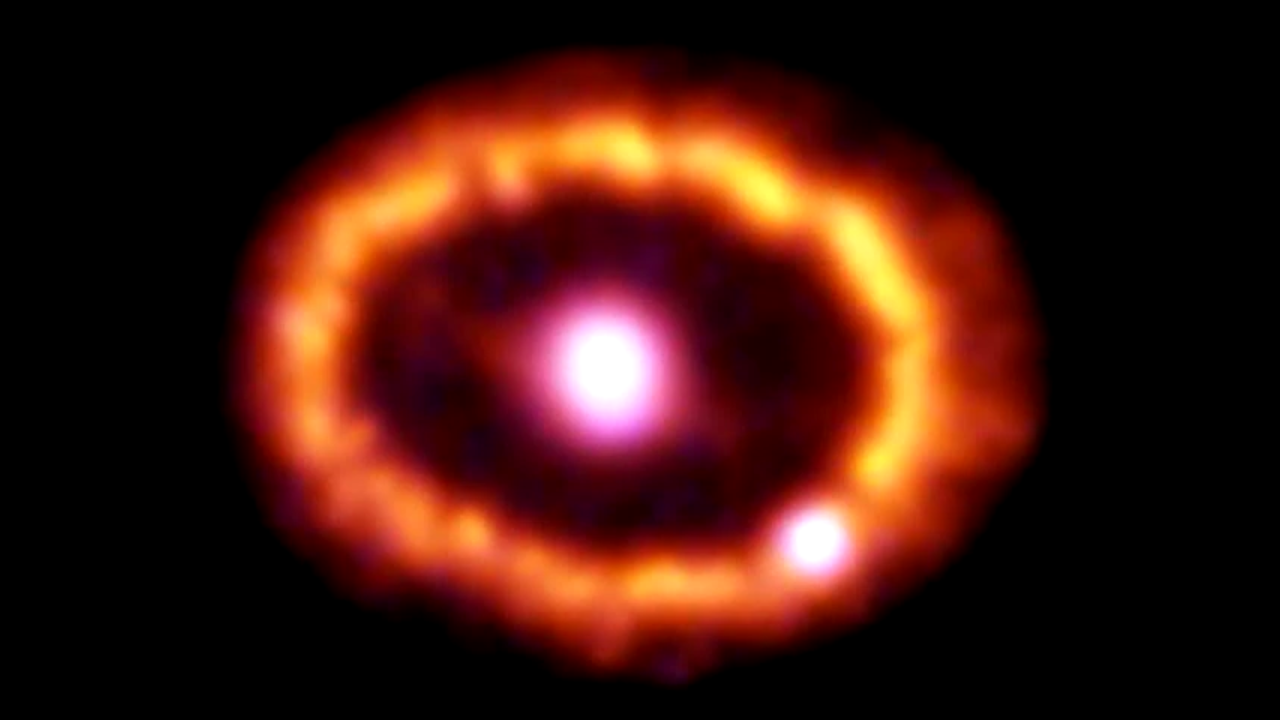Seventeen years ago, astronomers spotted the brightest stellar explosion ever seen since the one observed by Johannes Kepler 400 years ago. Called SN 1987A, the titanic supernova explosion blazed with the power of 100,000,000 suns for several months following its discovery on Feb. 23, 1987. Although the supernova itself is a million times fainter than 17 years ago, a new light show in the space surrounding it is just beginning.
This image, taken Nov. 28, 2003 by the Advanced Camera for Surveys aboard NASA's Hubble Space Telescope, shows many bright spots along a ring of gas, like pearls on a necklace. These cosmic "pearls" are being produced as a supersonic shock wave unleashed during the explosion slams into the ring at more than a million miles per hour. The collision is heating the gas ring, causing its innermost regions to glow. Curiously, one of the bright spots on the ring [at 4 o'clock] is a star that happens to lie along the telescope's line of sight.















































